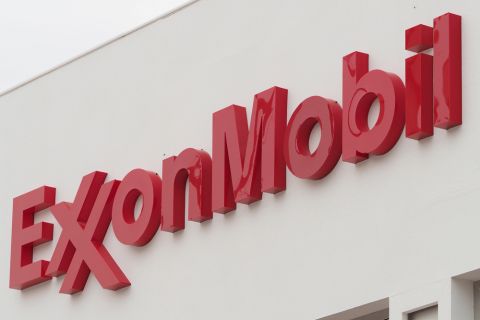
(Source: FreezeFrames/Shutterstock.com)
E&P companies have made significant strides in drilling and completion efficiency, but the head of a Permian Basin pure-play sees more opportunity ahead as it works with the oilfield service sector and experiments with different techniques.
Speaking during the virtual Barclays CEO Energy-Power Conference this week, Concho Resources Inc. President Jack Harper said “the bottom line is we’re drilling the wells and completing the wells faster and more efficiently. And we’re doing it in ways that I think we can maintain outside of just the normal inflation.”
The company reported a 35% increase in feet completed per day per crew for second-quarter 2020, up to 1,700 ft, compared to a year earlier. The number of feet drilled per day per rig also showed a 50% improvement, rising to 1,100 ft compared to 710 ft a year ago.
The improvements were delivered alongside DC&E well costs reductions of 33% and 22% in the Delaware and Midland sub-basins, respectively, year-over-year.
“We now think that for the full year our DC&E per foot across the company will be less than $800 per foot. … The leading edge well costs in the Delaware are less than $800 a foot and less than $650 a foot in the Midland Basin.”
The Midland, Texas-based company has attributed the improvement to efficiency gains and service cost pricing.
Operational and cost efficiency remain among the priorities for U.S. shale players that have faced a rough first half of the year with low oil prices, global oversupply and a worldwide pandemic that has slowed demand.
With watchful eyes on the markets while keeping tabs on debt, free cash flow and spending, many E&Ps are also focusing on maintaining efficiency as they ponder when to grow production and deploy more capital.
Several operators have discussed simultaneous fracs, or simul-frac, in another move toward capital efficiency. Using a single crew, the technique could increase lateral footage and complete more stages quicker compared to zipper-frac operations.
“When performing zipper-frac operations on a four-well pad, you are essentially stimulating two wells, while the other two sit idle. Simul-frac operations eliminate this idle white space by continuously making forward progress across all four wells,” Halliburton explained on its website. “During a simul-frac operation, you are pumping down two wells, while perforating the other two, allowing you to complete more lateral footage in the same amount of time compared to current zipper-frac operations.”
Harper said Concho, which has partnered with Halliburton on several projects, could try the technique before the end of the year.
“Like everything else, it has the potential to lower cost, which is very positive,” Harper said, noting it’s not without potential issues. “But I think that along with several other small incremental changes can really continue to enhance our efficiency and the industry’s efficiency as we move forward. So, we will definitely try that. But there are other items that are just always percolating in the background as well.”
Turning to the topic of well spacing, Harper said the company’s move back to wider spacing has gone as expected.
“But these are the same assets in the same plays with, frankly, better cost. So, it’s a better economic outcome today,” Harper said. “I’m happy to see the results there. But it’s not entirely surprising, given that we’re really operating in the same areas in the same rock that we were back in ‘16, ‘17 and ‘18.”
RELATED:
Concho Resources Grows Permian Basin Production, Reduces Costs
Differing Approaches To Optimizing Permian Well Spacing
Concho has also experimented with different flowbacks, or slowbacks, and lift methodologies, Harper said.
“The initial rates may be slightly muted from previous points in time, but you should see a flatter decline,” he said. “I think that’s an important point to make. Not only does slowing down our activity level moderate our decline rate, but you can also help your near-term declines” by bringing back wells slower and opting to use gas lift.
“We will continue to experiment with that, and we think that there could be a very modest rate of return impact,” he added.
Recommended Reading
What's Affecting Oil Prices This Week? (Feb. 5, 2024)
2024-02-05 - Stratas Advisors says the U.S.’ response (so far) to the recent attack on U.S. troops has been measured without direct confrontation of Iran, which reduces the possibility of oil flows being disrupted.
Veriten’s Arjun Murti: Oil, Gas Prospectors Need to Step Up—Again
2024-02-08 - Arjun Murti, a partner in investment and advisory firm Veriten, says U.S. shale provided 90% of global supply growth—but the industry needs to reinvent itself, again.
Paisie: Economics Edge Out Geopolitics
2024-02-01 - Weakening economic outlooks overpower geopolitical risks in oil pricing.
Commentary: Are Renewable Incentives Degrading Powergen Reliability?
2024-02-01 - A Vistra Corp. chief, ERCOT’s vice chairman and a private investor talk about what’s really happening on the U.S. grid, and it’s not just a Texas thing.
Exxon’s Payara Hits 220,000 bbl/d Ceiling in Just Three Months
2024-02-05 - ExxonMobil Corp.’s third development offshore Guyana in the Stabroek Block — the Payara project— reached its nameplate production capacity of 220,000 bbl/d in January 2024, less than three months after commencing production and ahead of schedule.






